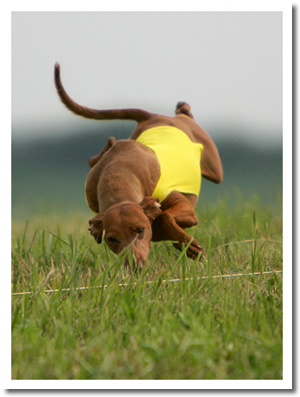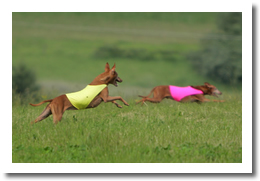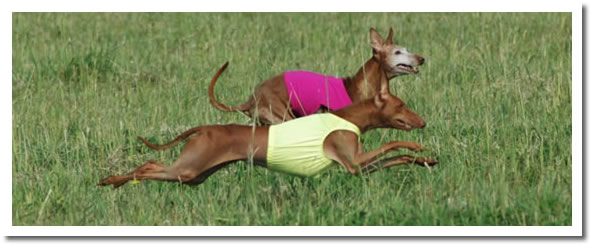|
The
Italian cynologist and author, Fiorenzo Fiorone, deduces from the absence
of a true "hound" in Sicily, that the Cirneco is the result
of a progressive adaptation of the dogs left by the Phoenicians along
the coasts of Sicily. He suggests that the lack of wide-open spaces, the
limited food available for the dogs and continuous inbreeding produced
a sort of "miniaturizing effect" which is common to all the
animals of the Italian islands.
 Photographer:
Shot On Site
Photographer:
Shot On Site
|

The
most vivid proof of the presence of the Cirneco in Sicily for at least
the past 2500 years is the many coins minted between the 5th and 3rd centuries
B.C. depicting exemplars of the breed. In particular, the Cirneco is used
on coins minted at Segesta, with about 150 variations occurring on silver
coins and about 100 on bronze coins. In other Sicilian towns, including
Erice, Piakos, Motia and Palermo, the dog had symbolic/religious significance
and was often depicted by the local mint.
|







